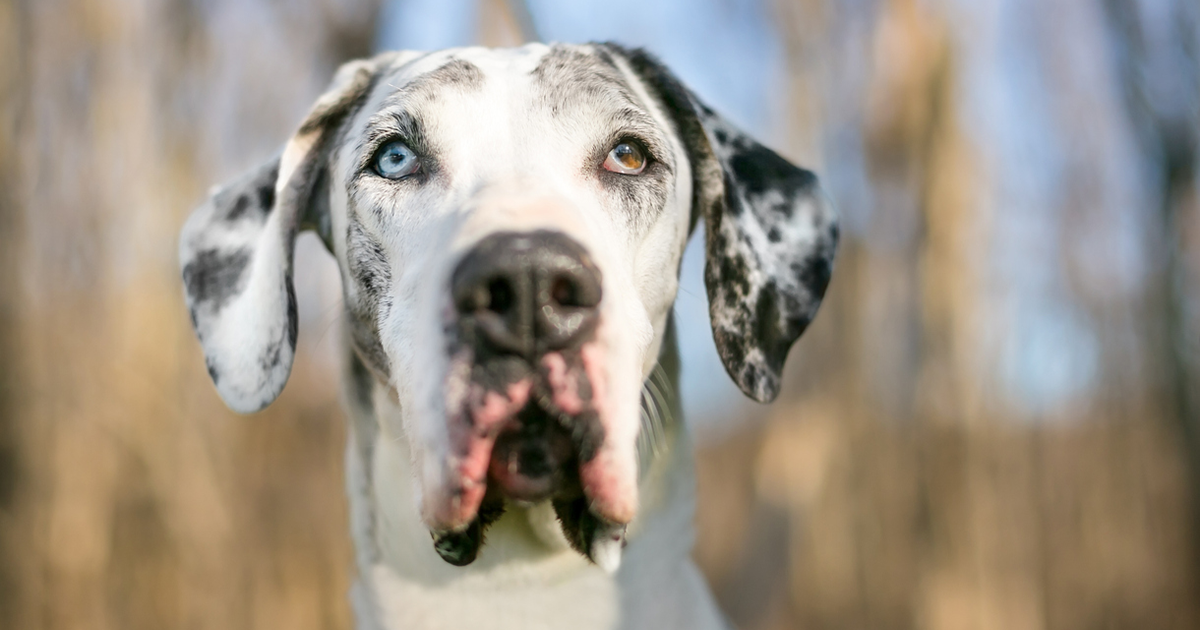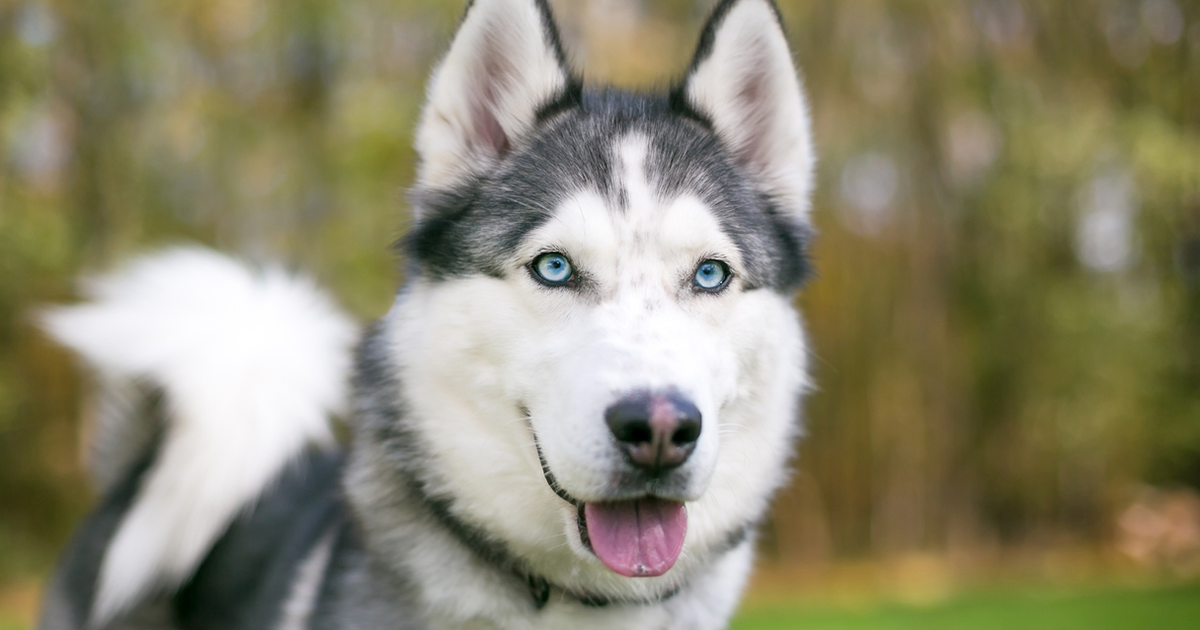The gentle giant of the canine kingdom, the Great Dane is one humongous hound among dog breeds. Everything about these pups is jumbo-sized—their personality, their heart, and, of course, their stature. One part working dog, one part cheerful companion, Great Danes are a popular large-size dog breed.
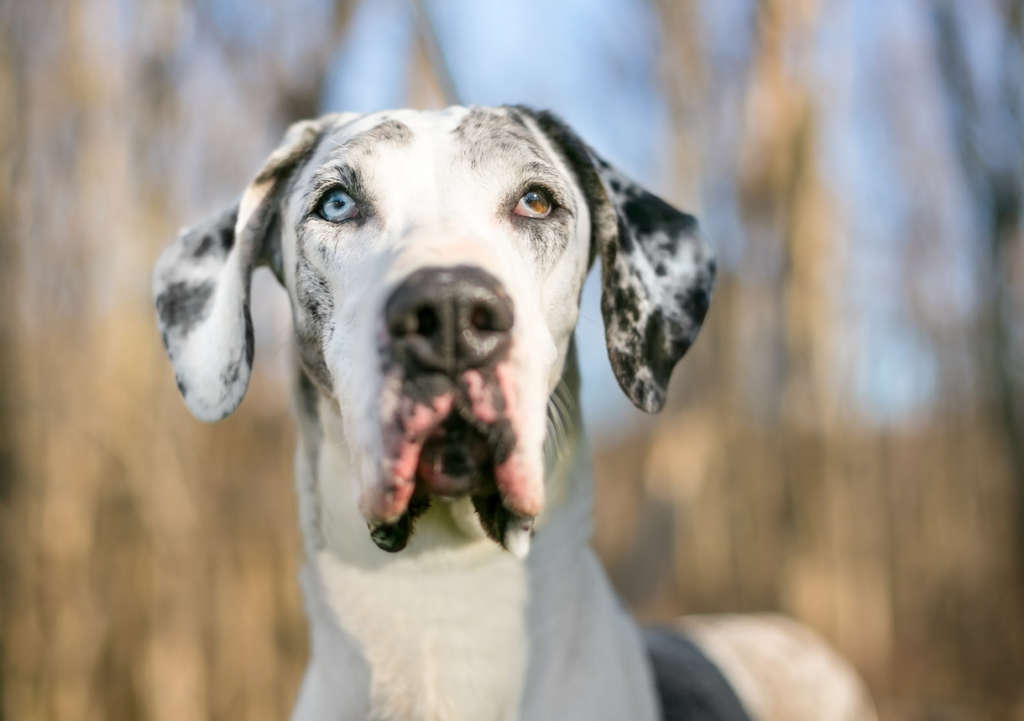

What makes the Great Dane so great? Well, it depends on who you ask! Some people rely on them as hulking guardians and protectors; others adore them for their goofy charm. This large breed may not suit every lifestyle, but those who have enough space in their home know that “great” isn’t nearly a strong enough word to describe these awesome animals.
Breed Overview
Also Known As…
German Boarhound. Grand Danois. The national dog of Germany. Scooby, big boy, “a horse among dogs.”
What Is The History Of The Great Dane?
The “Great” part of the Great Dane name is easy to explain—seriously, just look at them. The “Dane” part? Not so much.
As far as anyone can tell, this giant breed has no connection to Denmark. The first true Great Danes were bred in Germany a few hundred years ago, though their bloodlines may go way back, linking them to some of the bigger dogs of ancient Europe and North Africa.
Those first Great Danes were big, strong, burly hunting dogs for German nobility. They worked in packs, taking down boars, bears, and other beasts for their lords and ladies. Today, they’re very popular in the United States and are more likely to attack a throw pillow than a wild animal, though they still make an excellent guard dog, at least on looks alone.
How Big Do Great Danes Get?
Great Danes are wonderful big dogs who need plenty of space to frolic in the sun. The average size of a Great Dane can meet at your hips. Although giant, these canines are gentle creatures who are very friendly. They also come in a variety of coat colors, including fawn, blue, black, brindle and harlequin!
Height: 28–33 inches (really big)
Weight: 110–170 pounds (really really big)
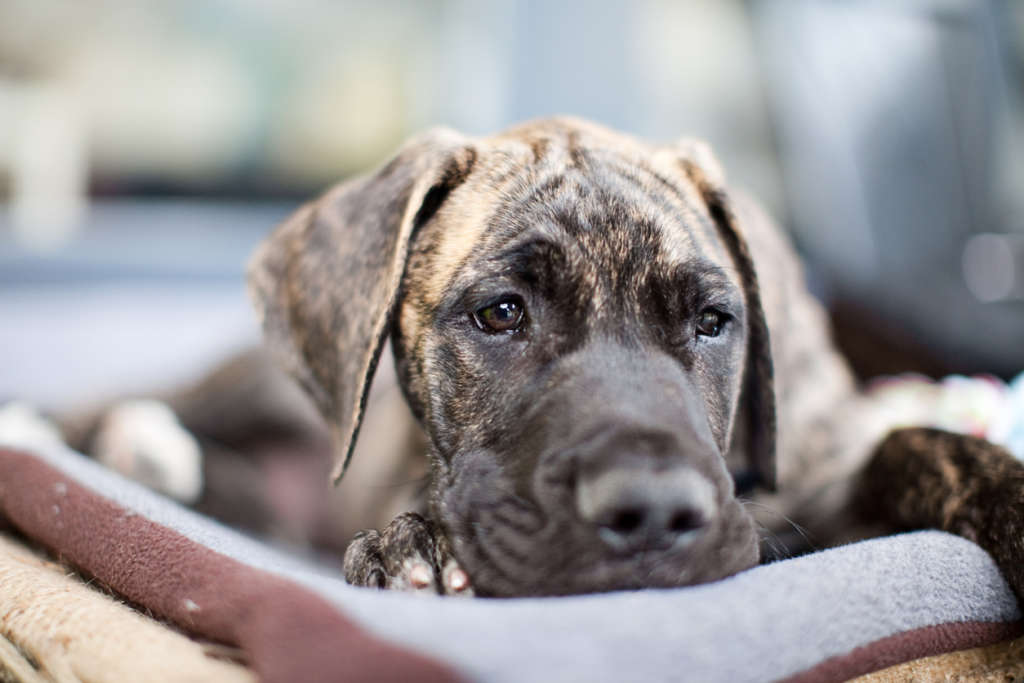

How Long Do Great Danes (Generally) Live?
Over the years, the Great Dane has earned an unfortunate nickname: the heartbreak breed. Due to some of the health problems that come with their towering stature, the average lifespan of an adult Great Dane is around 7–10 years. This could also vary between males and females.
However, heartbreak is somewhat avoidable here. Take care of your Great Dane, schedule regular visits to the vet, and your puppy could live to 12+ years.
What Is A Great Dane’s Temperament & Personality Like?
Great Danes may look like tough cookies, but underneath those broad shoulders, they’re total softies. Much like golden retrievers, most Great Danes are very affectionate with people they know (and even some they don’t), so you’re bound to fall in love fast.
If you’re ever lucky enough to own a Great Dane, be prepared to lose circulation in your legs during TV time. You may not think of your 150-pound pooch as a lap dog, but Brutus sure fancies himself one.
Their looks can also be deceiving on the mental front. While they may seem like lumbering oafs at first (drool alert), Danes are quite intelligent. They enjoy stimulating tasks or activities between bouts of barking at the delivery driver.


Good With Kids? Cats? Dogs?
Because of their gargantuan size, some kids—and parents—may be hesitant to hang with a Great Dane. However, these gentle giants have a well-earned reputation for being kind and patient and do not have any behavioral changes or concerns. If you supervise young children and watch out for any horseplay, you should have nothing to worry about. That being said, sometimes these dogs just don’t know their own size, so always keep an eye out when they frolic with anyone or anything smaller than they are!
Cats and Great Danes can also be buddies if brought up together, and the same can be said of other dogs. As long as they’re introduced in a controlled environment and given time to adjust, Great Danes can become friends with most animals and people. But when the neighbor’s tabby jumps up on the fence? Forget about it—the hunt is on!
Do Great Danes Need A Lot Of Exercise?
Because they were bred specifically for hunting, Great Danes have oodles of stamina. For whatever reason, these pups are particularly prone to the “zoomies,” so don’t expect too much peace and quiet around dinnertime. These are rambunctious ruffians, ready to race around the house in short bursts.
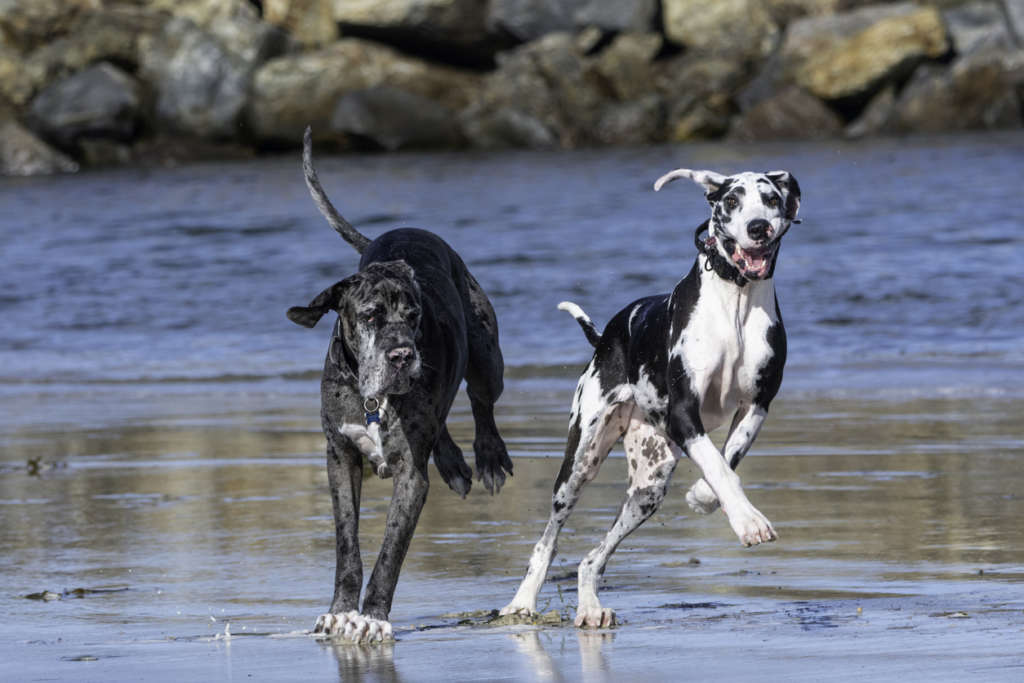

With great power (and size) comes great responsibility—and that includes ensuring your mini-horse gets enough exercise. With that in mind, this is an ideal breed for anyone living an active lifestyle. Your Great Dane will be more than happy to outrun you on your brisk morning jogs (and then smother you on the couch for a nap).
Are Great Danes Hard To Train?
While they can be rowdy, Great Danes have decent listening skills. Unlike poodles, they’re not overly obsessed with impressing their owners, but they won’t shy away from learning tricks—especially if there are treats involved.
If patience isn’t your strongest virtue, you may want to consider obedience classes. Before you know it, your Dane will be the best-behaved boy on the block.
Do Great Danes Have Health Issues?
Like a few other breeds, Great Danes are prone to certain health problems. Whether it’s due to their size or genes, these dogs are more likely to be affected by:
- Hip dysplasia – Especially common in large dogs like the German shepherd, hip dysplasia refers to the deterioration of the hip joint that can lead to movement pain. In Great Danes, it’s usually a hereditary health problem that can worsen with too much or too little exercise.
- Hypothyroidism – This is an autoimmune disease that causes problems with your pup’s metabolism. While it’s not curable, this health concern can be treated via oral medications prescribed by your vet.
- Bloat – Called gastric dilatation-volvulus (GDV) by vets, bloat can be quite a serious health issue among Great Danes as it can cause undue pain, and even death. Their wide, deep chest makes them more susceptible to this ballooning and twisting of the stomach. “Preventative tack” surgery can alleviate the worst of GDV.
Luckily, these afflictions can be identified through testing and addressed with modern medicine and routine care. Also, watch for any tell-tale signs that might hint toward any of these health problems. Visit the vet once or twice per year, feed your furry friend a healthy diet, and you should be able to avoid the brunt of these issues.
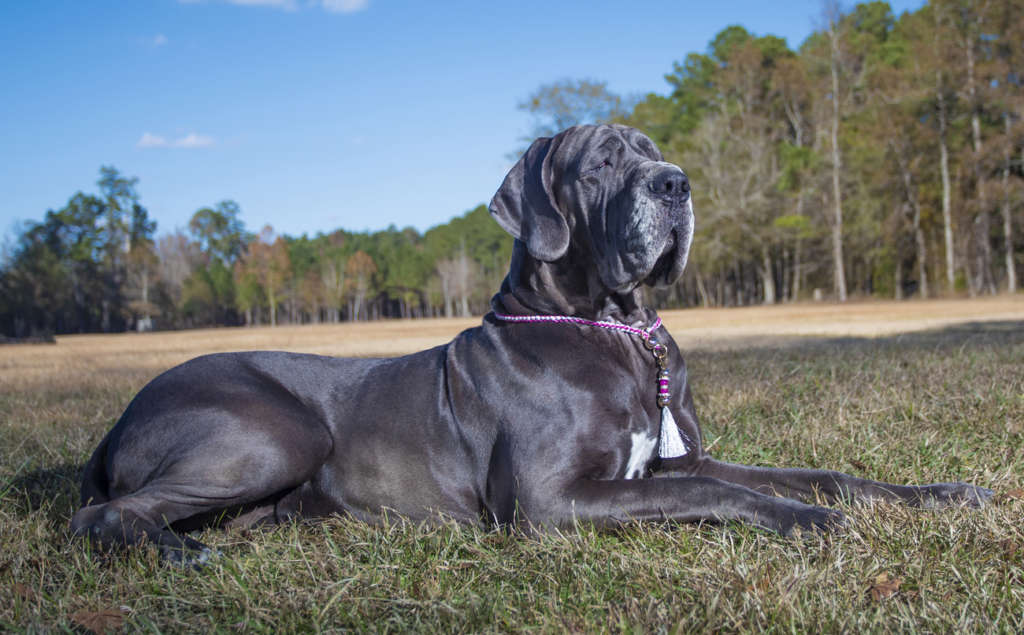

Do Great Danes Shed?
While Great Danes aren’t the most active shedders on the planet, the sheer amount of fur they sport makes them contenders for the dog-hair-on-the-couch Grand Prix.
Great Danes have a single, short coat of fur that sheds more heavily once or twice a year. If you’re looking to minimize the number of lint rollers you buy, consider investing in a brush or grooming glove to pick up that loose hair and commit to routine care before it ends up on your black pants.
How Much Does It Cost To Care For A Great Dane?
Because there are so many variables at play, estimating dog care expenses for growing danes is a tricky business. On average, you can earmark around $1500+ per year to adequately care for a Great Dane.
Food
The Great Dane has an appetite that matches its massive body. Even Great Dane puppies have a massive appetite. To feed your bottomless pit of a pup, expect to drop close to $100+/month on quality food.
Tired of carrying those 50-pound bags of food home, only to have them disappear within the week? BARK Eats delivers 5-star dog food to you—no heavy lifting required. Just enter your Great Dane’s age, weight, and dietary needs, and they’ll send you the right amount of food with the right ingredients. Get 50% off your first month!


Even though your Dane will need plenty of food, it may be best to serve it in small meals throughout the day rather than all at once. Bloat (GVD) can be caused by a distended stomach, so staggering meals may help keep your best friend safe.
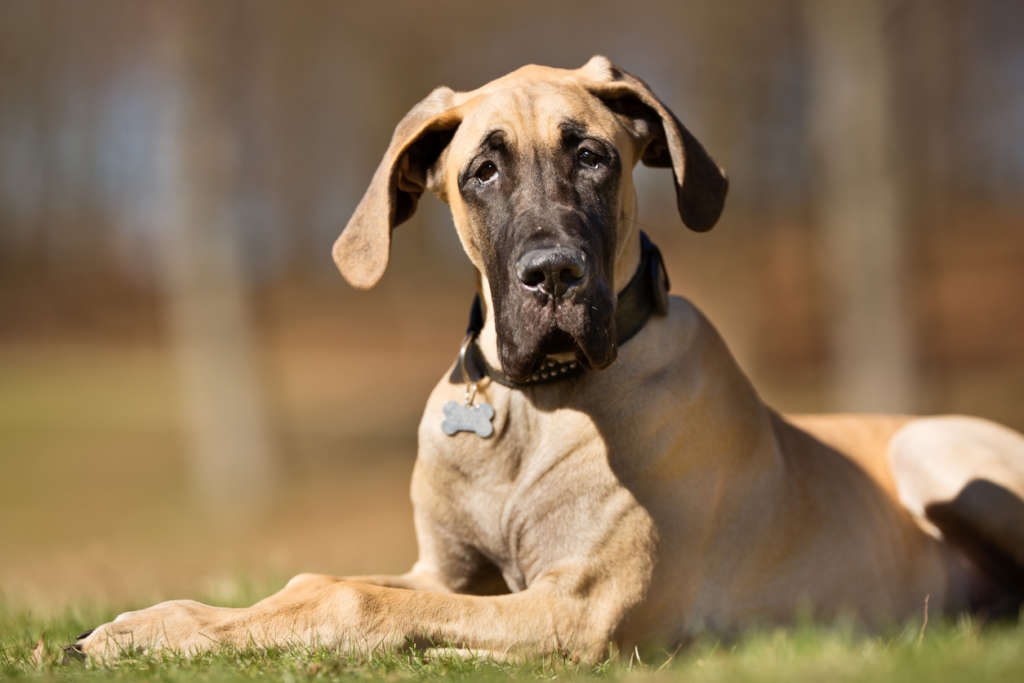

Routine Vet Care (Healthy Dog)
Healthy dogs still need to go to the vet, but they shouldn’t rack up an expensive bill while there. If you take your Great Dane to the vet once or twice per year, you’ll probably spend about $250 annually.
Along with the standard vet visit fees of $50–$60 each, this figure assumes the occasional:
- Heartworm medicine (~$45)
- Vaccine ($20–$30/dose)
- Miscellaneous expenses (variable costs)
Preventative Medications
If you and your Great Dane plan to spend any time outside—and you probably do—you’ll want to treat them for fleas and ticks. Your yearly dosage of these medications should cost you about $130+.
Another worthwhile expense is glucosamine chondroitin. This supplement promotes healthy joints and can help treat hip dysplasia and arthritis common in Great Danes. Typically packed into delicious treats, a year’s worth of glucosamine should cost you around $80. Don’t diagnose your Dane on your own, though—always consult with your vet before handing out these special snacks.
Grooming
An appointment at the groomer can be costly for a Great Dane. After all, there’s a lot more to shampoo. All in, each trip to the groomer’s should cost you $70–$110.
Luckily, this is a breed that doesn’t need constant grooming. Unless your pup rolls in something filthy, you won’t need to bathe them too often. And with a little practice, you can clip your canine’s nails yourself—something you should do regularly since long nails can lead to pain while walking.
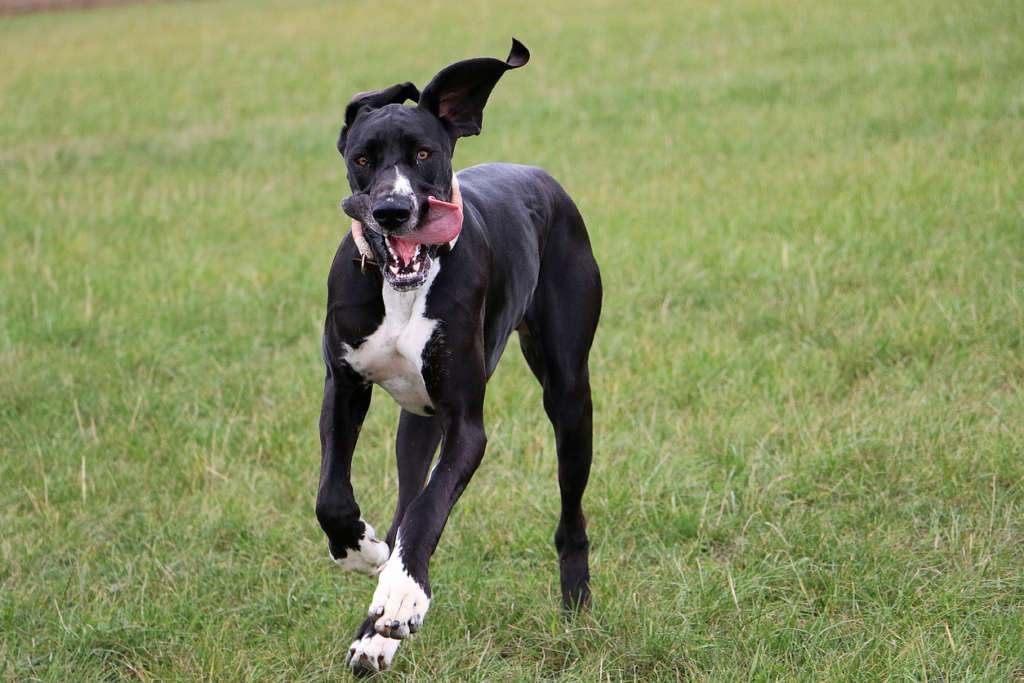

Toys, Treats, Beds, & Accessories
To stock your Great Dane’s toy chest full of the best toys, set aside an extra $60 or so. As for treats, your costs will depend on how often you like to reward your good boy or girl.
After your Great Dane demolishes the fifth chew toy, it’s time to bring in the big guns. With a Super Chewer subscription from BarkBox, you’ll receive 2 teeth-resistant toys, 2 full-size bags of treats, and 2 delicious meat chews for $29/month. DOUBLE YOUR FIRST BOX FOR FREE!


The rest of your “miscellaneous” budget will probably go toward expenses like:
- King-sized dog bed ($70–$110)
- XL collar ($20)
- Retractable leash ($15)
- Nail clippers ($12)
Sources
Great Dane Club of America. Purchasing a Great Dane. https://gdca.org/the-great-dane/great-dane-puppy-information/
Great Dane Club of America. Great Dane Health and Research. https://gdca.org/the-great-dane/health-and-research/


